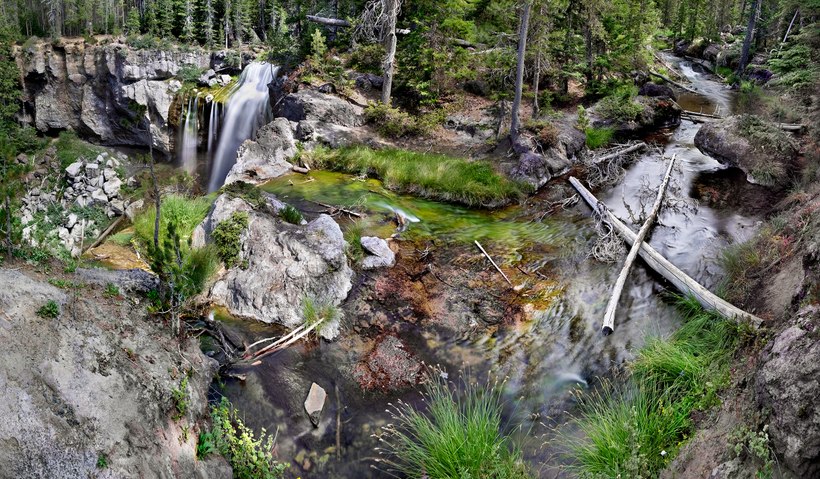Central Oregon’s Paulina Creek plunges over an 80-foot waterfall, draining water from Paulina Lake, which lies within a caldera—a basin formed after the collapse of the Newberry Volcano that first erupted 600,000 years ago. The creek begins at a gap in the caldera’s rim, and its path was shaped by floods that carved a channel through the volcanic rock from past eruptions.
Today, magma beneath the caldera heats springs under the lake and around its edges. The lake’s flow into the creek is mainly supplied by inflow from these hot springs. Over time, soft layers of volcanic tuff beneath the waterfalls have eroded quickly, creating a chaotic pile of boulders at the base of the falls. Along the creek, limbs cut from lodgepole pines are scattered across the streambed, leftovers of forest thinning to lower fire risk and disease.
The caldera has been a site of intermittent human activity for 11,000 years. Upstream, near the top right corner of this photograph, lie the remains of the oldest known dwelling in the western United States- a 9,500-year-old summer camp. It served as a base for generations of the Windust people, mobile tribes of hunter-gatherers who stalked bison and elk and collected fruit and nuts from these highlands. That is, until Mt. Mazama (now Crater Lake) erupted a hundred miles to the southwest, covering the region in thick ash 7700 years ago. After that eruption, the basin was uninhabited for nearly 4,000 years, until native people visited the crater’s obsidian fields to knap arrowheads. Today, campers gather along the basin’s two lakes to fish, hike, and relax in its hot springs.

